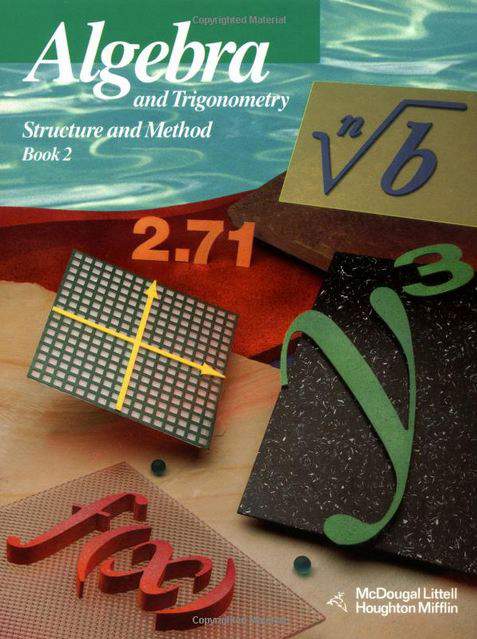Connecting...

This is a quick preview of the lesson. For full access, please Log In or Sign up.
For more information, please see full course syllabus of Algebra 2
For more information, please see full course syllabus of Algebra 2
Algebra 2 Common Logarithms
Lecture Description
Common logarithms are logarithms to the base 10. They are used in many applications. The base 10 is not written, so when you see log(x), the base 10 is implied. To solve exponential equations, take the common log of both sides of the equation. Then use a calculator to get a decimal approximation of the answer. In this lesson you'll also learn how to solve logarithmic inequalities. An important formula you'll learn is the change of base formula. If you want to get a decimal approximation of a logarithmic expression, convert the log expression to a log expression to the base 10 using the change of base formula. Then use a calculator to evaluate the new expression.
Bookmark & Share
Embed
Share this knowledge with your friends!
Copy & Paste this embed code into your website’s HTML
Please ensure that your website editor is in text mode when you paste the code.(In Wordpress, the mode button is on the top right corner.)
×
Since this lesson is not free, only the preview will appear on your website.
- - Allow users to view the embedded video in full-size.
Next Lecture
Previous Lecture









































 Carleen Eaton
Carleen Eaton Grant Fraser
Grant Fraser
 Answer Engine
Answer Engine



0 answers
Post by Daniel Nie on August 10, 2019
you forgot the parenthesis in "example different base"
1 answer
Sat Nov 7, 2015 6:12 PM
Post by Peter Ke on October 24, 2015
For Example 2, shouldn't the answer be:
Log(base10)22 / Log(base10)7 ?
1 answer
Fri Nov 22, 2013 7:39 PM
Post by Juan Herrera on November 21, 2013
At 15:05, Log base 6 of 8 want to write as Log base 10
** It should be: Log base 10 of 8 divided by Log base 10 of 6
I believe the main purpose of this property is to change
difficult Logarithmic bases to a common (base 10) or Natural base (e)
to solve problems in a practical easy way.
1 answer
Fri Mar 1, 2013 10:59 PM
Post by Kenneth Montfort on February 27, 2013
Do the log properties not apply here to common logs. For example, if you have log 7/log 4, can't I just subtract 7 and 4 to find the final log value (e.g. log 3)? Or is it acceptable to just leave it in the form log 7/log 4.
1 answer
Sat Aug 25, 2012 12:34 PM
Post by Jorge Sardinas on August 14, 2012
in example one at 2x=log19/log3+3 your supposed to divide two by everything
1 answer
Thu Jun 21, 2012 9:56 PM
Post by Rob Escalera on June 19, 2012
It seems, that as long as you take the entire quantity, you can either divide or distribute and the answer will be the same.
1 answer
Thu Jun 21, 2012 9:55 PM
Post by Rob Escalera on June 18, 2012
In example I again, don't you need to distribute the quantity (2x-3) log3 ?
1 answer
Thu Jun 21, 2012 9:50 PM
Post by Rob Escalera on June 18, 2012
At 4:00, don't you need to distribute the (3x 4)log2 to become: 3xlog2 4log2 = log5?
Which should then be: 3xlog2 = log5 - 4log2 =>
x(3log2) = log5 - 4log2 => x = (log5 - 4log2)/3log2
3 answers
Sun Mar 11, 2012 7:21 PM
Post by Jimmi Aastrom on March 29, 2011
A short remark.
At around 5:30 I believe that a paranthases needs to be added arount the log-fraction and negative 4!?
1/3(Log5/Log2)-4 needs to be 1/3((Log5/Log2)-4)
Otherwise only part of the expression is devided by 3 which would be incorrect.